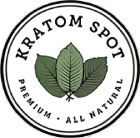
Is kratom legal in your area? It’s an important question! The short answer? Probably. Kratom is legal throughout the vast majority of the US, with no pending laws to list it as a controlled substance or otherwise ban it.
While this natural supplement remains legal in most areas of the US, kratom is banned in a handful of states and counties throughout the country; if you live in one of those areas, purchasing kratom products could land you in legal hot water.
Today we’ll be presenting a run-down of everything you need to know regarding the kratom legal status, with an overview of all existing kratom legislation. We’ll also provide a few tips for what you can do to help ensure access to safe, effective kratom powder in your state’s future. For a more global perspective, be sure to check our guide to kratom laws around the world!
Is Kratom Legal in my State?
Kratom’s legality status changes from time to time as public sentiment and new research emerge. Here you can find a state-by-state breakdown of the kratom legal status, as well as a few key details on past and current kratom laws.
| State/District | Is Kratom Legal? | Notes |
| Alabama | Kratom is illegal in Alabama | Schedule 1 drug, banned May 2016 |
| Alaska | Kratom is legal in Alaska | |
| Arizona | Kratom is legal in Arizona | |
| Arkansas | Kratom is illegal in Arkansas | Banned in February 2016 |
| California | Kratom is legal in California, except in San Diego County | Banned in San Diego County in June 2016 |
| Colorado | Kratom is legal in Colorado | |
| Connecticut | Kratom is legal in Connecticut | |
| Delaware | Kratom is legal in Delaware | |
| Florida | Kratom is legal in Florida, except in Sarasota County | Banned in Sarasota County in 2016 |
| Georgia | Kratom is legal in Georgia | Georgia considered a kratom ban, but a bill protecting kratom use and sale passed in April 2019. |
| Hawaii | Kratom is legal in Hawaii | |
| Idaho | Kratom is legal in Idaho | |
| Illinois | Kratom is legal in Illinois, but with an age restriction. | Bill passed in 2014 to ban the sale of kratom to minors. |
| Indiana | Kratom is illegal in Indiana | Initially banned in 2014, but incorrectly listed as a synthetic cannabinoid. Later amended to a Schedule 1 controlled substance as a hallucinogenic substance (still a misclassification). |
| Iowa | Kratom is legal in Iowa | 2014 legislation attempted to ban kratom but failed due to massive public outcry |
| Kansas | Kratom is legal in Kansas | |
| Kentucky | Kratom is legal in Kentucky | 2016 legislation attempted to ban kratom, but the bill failed |
| Louisiana | Kratom is legal in Louisiana | |
| Maine | Kratom is legal in Maine | |
| Maryland | Kratom is legal in Maryland | |
| Massachusetts | Kratom is legal in Massachusetts | |
| Michigan | Kratom is legal in Michigan | A bill to ban kratom as a Schedule 2 drug was introduced in August 2019. The state is currently considering the bill, which could make kratom illegal in Michigan. |
| Minnesota | Kratom is legal in Minnesota but with an age restriction | Age restriction enacted by 2018 law |
| Mississippi | Kratom is legal in Mississippi | |
| Missouri | Kratom is legal in Missouri | |
| Montana | Kratom is legal in Montana | |
| Nebraska | Kratom is legal in Nebraska | |
| Nevada | Kratom is legal in Nevada | |
| New Hampshire | Kratom is legal in New Hampshire, except in Franklin City. Age restriction in other parts of the state. | New Hampshire nearly banned kratom in 2016, but the bill was revised to enact an age restriction following public outcry. Franklin City banned kratom in September 2019. |
| New Jersey | Kratom is legal in New Jersey | New Jersey introduced a bill to ban kratom in 2015, but the bill failed. The bill was reintroduced and again failed in 2018. The same bill was reintroduced once more in January 2020. Kratom is still legal in New Jersey, but with age-restrictions on sales |
| New Mexico | Kratom is legal in New Mexico | |
| New York | Kratom is legal in New York, but with an age restriction | Bill banning sale of kratom to minors was passed in 2019. A 2017 bill attempted to ban kratom, but the bill died in committee. |
| North Carolina | Kratom is legal in North Carolina, but with an age restriction | A bill attempting to ban kratom was introduced in October 2016, which failed due to public outcry. Instead, North Carolina restricted sale of kratom to minors in 2017. |
| North Dakota | Kratom is legal in North Dakota | |
| Ohio | Kratom is legal in Ohio | |
| Oklahoma | Kratom is legal in Oklahoma | A 2014 bill attempted to ban kratom in Oklahoma, but failed after a massively successful petition from kratom advocates |
| Oregon | Kratom is legal in Oregon | A 2019 bill attempted to regulate kratom and criminalize adulterated kratom powder. The American Kratom Association supported the bill, but it ultimately failed. |
| Pennsylvania | Kratom is legal in Pennsylvania | |
| Rhode Island | Kratom is illegal in Rhode Island | Kratom has been illegal in Rhode Island for some time, but a new bill could lift the ban and regulate kratom in the state. According to the AKA’s Mac Haddow, “The Rhode Island Department of Health has started to listen on kratom, but as of now, they are not convinced it should be regulated rather than banned there.” |
| South Carolina | Kratom is legal in South Carolina | |
| South Dakota | Kratom is legal in South Dakota | |
| Tennessee | Kratom’s legal status is complicated in Tennessee | Tennessee banned “synthetic” kratom many years ago, but kratom “in its natural botanical form” is still legal. According to the Attorney General’s 2017 statement, “Possession of the Kratom plant in its natural botanical form should not subject a person to potential criminal prosecution under Tennessee law. The Kratom plant in its natural botanical form is not a prohibited controlled substance.” However, enforcement has been inconsistent, and some have been arrested for buying natural kratom in Tennessee. |
| Texas | Kratom is legal in Texas | |
| Utah | Kratom is legal in Utah | |
| Vermont | Kratom is illegal in Vermont | Kratom’s primary alkaloids were banned in 2016 and incorrectly labeled as “synthetic” drugs. In January 2020, a pending bill was filed, which seeks to decriminalize kratom. This legislation is still pending, but Vermont may soon overturn their kratom ban. |
| Virginia | Kratom is legal in Virginia | |
| Washington | Kratom is legal in Washington state | |
| West Virginia | Kratom is legal in West Virginia | |
| Wisconsin | Kratom is legal in Wisconsin | Kratom’s primary alkaloids were banned in 2014 in a bill incorrectly associating kratom with hallucinogens and synthetic cannabinoids. In October 2019, the Wisconsin Senate Committee held an informational hearing with the AKA and many other authorities; response to the hearing was favorable. As a result, Wisconsin overturned their ban with reasonable restrictions on sale. |
| Wyoming | Kratom is legal in Wyoming |
What Can I Do to Help Keep Kratom Legal?
Wherever you live in the United States, kratom faces an uncertain future. It’s up to kratom advocates like the American Kratom Association and users like you to spread the word about safe, effective kratom and its benefits.
Unfortunately, the Food and Drug Administration, whether out of malice or ignorance, continues to rely on and spread misinformation about kratom and push for more restrictive kratom laws. In some areas, bans and restrictions prevent those in need from accessing the kratom that could otherwise benefit their lives. In other locations, it’s led to mislabeling kratom as a synthetic drug or a cannabis derivative — misclassifications that build stigma and endanger this natural botanical’s future.
If you live in an area where kratom is banned or threatened, there are several things you can do to help change kratom laws:
- Sign up with the American Kratom Association to offer testimonials and support
- Submit video testimonials (through the AKA website)
- Contact your state and local representatives
- AKA asks people to help view the passage of the Kratom Consumer Protection Act as a significantly important issue. That’s because it would not only help to fight an FDA kratom ban but would also help to ensure that only pure, high-quality kratom is available in the market, and not a dangerous and chemically adulterated product.
- You can reach out to your local legislature directly or can use the AKA’s advocacy platform
- Sign the AKA petition to President Trump
This type of advocacy is the only way to ensure that kratom laws stay fair, and it remains available for those whose lives it has positively affected. Your voice matters and many past kratom bans have crumbled under the weight of passionate public outcry.
If you or a loved one are one of the millions whose lives benefit from safe, legal kratom capsules and powders, then make your voice heard! No one should have to ask, “Is kratom legal?” ever again. The future of legal kratom is in our hands.

